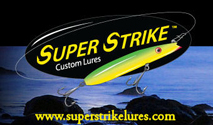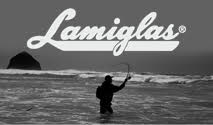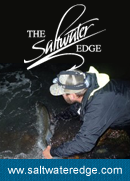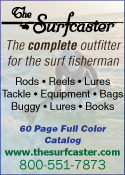I wrote this few years ago but since i will be talking about this at RISAA show i figured its fitting to bring it back
It’s All About The Whitewater ……sometimes 🙂
It must seem preposterous to suggest that something as simple as the rising and falling of a wave can unearth the clues to the feeding habits of striped bass. That is only if you believe that a striper’s behavior is unpredictable. With their broad shoulders and powerful tails, stripers are built for short bursts of speed. They are opportunistic feeders with tendencies to take the easiest way to find a meal but, unpredictable? It is my opinion that they are not. You show up a day after you hammered the fish, same tide, same plugs, and same area. Even the wind is the same, well, almost. Instead of a moderate southerly, now it is coming from the northwest but other than that everything is the same. Hey, with a wind in your back you can cast another 50 yards further. You even notice the presence of same bait fish in the water as you did yesterday but the fish are not responding. Now your mind is spinning trying to come up with an answer that would justify your curiosity.” Did the bait slingers clean out the bar overnight? Did the fish migrate westward or eastward? Is it possible for a change so drastic to occur without an apparent reason?

Let’s examine the facts
Stripers are not built for speed like a tuna so chasing down a meal is out of the question. What they are built for is short, strong bursts of speed, propelled by their powerful, broad tails. Akin to a basketball player who looks for an opening as he dribbles at the top of the key and then explodes inside the paint with a burst of speed that often surprises the defense. Now, this same player would probably be left in the dust after 20 yards in a race with a sprinter but then again he is not conditioned for an enduring speedy run. Neither are the stripers. Instead of giving chase they stalk and ambush. They lay in hiding, or cruise the beach waiting for a “perfect” moment to strike at prey. What is a perfect moment? A time that could be best described as a precise time when the least amount of energy will be expanded in order to capture a meal. Unlike us humans who cannot seem to let a Mr. Softy truck pass by without picking up a treat, stripers feed in a more orderly manner. They only eat enough to sustain their growth, probably the main reason why we never see an overweight striper. So the question becomes, under what conditions do stripers find themselves in the most advantageous position to fill their bellies, yet expand the least amount of energy while doing so? In my opinion, the one thing that affords them this opportunity and is more important than moon phase, cloud cover or even the presence of bait fish along the ocean front is foamy, delicious white water. Seems like a pompous statement to make, doesn’t it? Some water being tossed around by wind being more important than the availability of food? The answer is yes! Onshore winds puts things in motion on the bottom of the ocean and the transformation that takes place bellow the surface is astounding even if it’s not visible to a naked eye.
Transformation …..
Although having some bait fish present in the surf is desirable there is no need to fret when they are not around. Under flat water conditions the ocean bottom is not exactly brimming with activity. The crabs, sand worm and sand fleas bury themselves in the sand as soon as they sense danger in close proximity, in this case a hungry fish. Stripers themselves become inactive and move into the deeper water .In addition, a lack of wave action becomes an issue as stripers are known to prefer some “cover” over their heads when cruising shallow waters. Now add to this scenario an onshore wind and this same stretch of beach that moments ago looked like a dead zone is suddenly teeming with life. Onshore breezes push the water onto the shallow sandbars that usually run parallel to the shore. This strong rush of water has nowhere to go but up until it crests, fold into itself and rolls toward the shore with white, milky residue forming behind the wave. This turbulence shifts sand on the bottom exposing the crustaceans who buried themselves to hide from predators. They become a victim of a powerful surge of water, getting tossed around inside a rolling wave. Voila! An easy meal for the striper who is cruising effortlessly through the same turbulence picking at this smorgasbord at will. As you can see the presence of bait fish is not a requirement for fish to become active if the water conditions are right. Right about now I can hear the wheels spinning in the heads of those who have been conditioned to “find bait and you’ll find fish” approach. “Crabs, shrimps”, they’ll say “give me sand eels, peanuts, mullet”. Not necessary, would be my reply. Think about it besides those few glorious weeks in the fall when bait is so thick you can almost walk on water the striper’s diet consists mainly of crustaceans like crab and sand fleas on the open beaches. In has been my experience over the years when cleaning fish that there are at least three times as many crustaceans in its stomach than bait fish.By now I hopefully convinced you that white water on the open beach is akin to the straw that shakes the drink and that large quantities of bait fish are not a necessary requirement for success. But what does happen when you throw little oily suckers in the mix? An absolute mayhem usually but not in the way you might think. Just because the beach is loaded with bait and white water is rolling does not mean that you can just pick any stretch of a beach and start nailing fish at will. Actually, it’s quite the opposite. Few guys positioned on a particular piece of structure will do a bail job while most others will have to be satisfied with a fish or two
I would hate to be a mullet….
During past mullet runs (which usually occur in mid September after a first strong cold front) I often observed stripers slashing through the schools along the open beach and then regroup. A scattering of mullet that went airborne trying to escape the predators are taking the same route as they too regroup into dense schools looking for safety in numbers. You could follow these schools westward down the beach and hope that you pick a few fish along the way or you could use the ambush approach the stripers are fond of to using to ambush them. Talking about turning tables! Even though the mullet schools can be dense and large in size; the striper still has to chase them down to eat them. These are not crippled or sickly bait fish but healthy specimens hoping for a long journey down the coast to their wintering grounds. Mullet travel along the beach front in the trough between beach and a sandbar, usually reachable with a short cast. What I like to do is to find a sandbar that curves toward the beach and in the best possible scenario, runs into the beach.  While the mullet (or any other bait fish) often travel unmolested to this point once they hit the turbulent white water on the shallow sandbar all hell breaks loose. Stripers who let the bait fish swim to this point unencumbered are slashing through the turbulent white water with ease while the mullets are getting tossed around like socks in the dryer. If an onshore breeze does not exist, there is no white water. If there is no white water, the bait fish moves over the shallow sandbar undisturbed, and the stripers? They go feed in a different location, a place were a current will bring them a meal like behind a bridge abutment or an inlet jetty rip. So white water is the key that brings it all together, the prey and the predators. Bait fish cannot navigate these turbulent, churning waters without some difficulties and at some point during the wave rolling sequence it will find itself helplessly at the mercy of predators. At which point the stripers will move in for the kill. What? You thought just because you have white water you can now cast at will and as far as you want you will catch fish? Oh no! The ability to cast and place a lure at certain places during a wave sequence is what this is all about. This is the most important part, the essence of white water fishing.
While the mullet (or any other bait fish) often travel unmolested to this point once they hit the turbulent white water on the shallow sandbar all hell breaks loose. Stripers who let the bait fish swim to this point unencumbered are slashing through the turbulent white water with ease while the mullets are getting tossed around like socks in the dryer. If an onshore breeze does not exist, there is no white water. If there is no white water, the bait fish moves over the shallow sandbar undisturbed, and the stripers? They go feed in a different location, a place were a current will bring them a meal like behind a bridge abutment or an inlet jetty rip. So white water is the key that brings it all together, the prey and the predators. Bait fish cannot navigate these turbulent, churning waters without some difficulties and at some point during the wave rolling sequence it will find itself helplessly at the mercy of predators. At which point the stripers will move in for the kill. What? You thought just because you have white water you can now cast at will and as far as you want you will catch fish? Oh no! The ability to cast and place a lure at certain places during a wave sequence is what this is all about. This is the most important part, the essence of white water fishing.
We are not done…..yet
So now we place ourselves in the prime location, we got bait rolling in the wash and an onshore breeze is creating some nice rollers. Now comes the hard part. To put yourself in the right position you did not need any skill, just your eyes to find the opportunity that is now presented in front of you. Now you will need to put it all together in order to increase your success rate exponentially and please do not think I am making this statement lightly. Once the “white water “light went on inside my head it never went off. It has affected everything I’ve done since that day; the way I look at water in front of me to the way I work a lure. Any lure! Some ground rules…..
<div >First rule of fishing white water is to never, ever cast your lure or a leadhead in front of a folding wave. This is considered a cardinal sin for two reasons. If you place your offering in front of the wave, the rushing water will collapse on the lure and you will momentarily loose contact with your lure. The second reason is that all the action is taking place on the “backside” of the wave. I often observe stripers fins cruising in the milky white residue left in a wake of a folding wave. Stripers are fond of trailing the wave and when it collapses they move in with precision. They cruise the foam for a few seconds looking for any crustaceans that were lifted off the bottom or any bait fish that was tossed by the force of white water and is now momentary stunned in the foam. This extremely coordinated feeding lasts a very short time. Perhaps, twenty seconds at most in each wave sequence. So in order to cash in your lure must be placed in the right location with precision. When using a metal lip, popping plug or another top water lure I will time my cast so that my lure will land behind the wave as it folds.  If you wait until the wave crashes and then you make a cast your plug will land in the prime real estate too late as the foam will already start to dissipate.
If you wait until the wave crashes and then you make a cast your plug will land in the prime real estate too late as the foam will already start to dissipate. 
Trust me on this. I still remember a recent morning when I fished under less than ideal white water conditions due to the lack of wind. I possibly made more than a few hundred casts with Troublemaker Surfsters yet I only hooked up when my lure landed in the white water behind a decent roller. All the other casts with a Surfster or a Danny in the same area were ignored. Back to white water. Once the lure lands in the foam keep it there as long as possible. When using poppers or a pencil popper I like to finesse the lure over the top of an incoming wave just enough to keep in contact than regain solid contact and work the lure over that milky foam like it is the Promised Land. Under most conditions you can work this little patch of very productive water on the multiple incoming waves on a single cast. In the rough water I will opt for working the same area by going “under” the foam with needlefish and bucktails with the same principal approach but a slightly different retrieve. The cast again should be placed behind the wave and slack picked up as soon as possible. You have to time the incoming wave as it will lift your lure up in the water column. Just before this happens I like to pick up the speed of my retrieve but then almost immediately after regaining contact with the lure (which is now on the backside of the wave) I’ll slow it to a crawl and keep it in the foam behind the wave. I’ll do this on every consecutive wave as it rolls toward the shore. Almost all the hits will come as the bucktail or a needlefish is wallowing in the foam behind the wave. With a bucktail I might at times speed up the lure and try to keep it behind the single wave all the way to the shore or for the better part of it.
Day or night…..
This kind of fishing produces equally well in daytime or in the hours of darkness. The difference is that during low light conditions we must rely on our rod to telegraph what our lure is doing instead of visual contact. This is not as hard as it seems especially with bucktails and needlefish. Metal lips (by the way, my favorite lure for this type of fishing) are a bit trickier until you get a “feel” for what the lure is doing “out there” but they can be mastered fairly quickly.
Casting experience not required
When I say white water I don’t mean that foaming wave three casts away rolling off the offshore sandbar. I am talking about that last stretch of foamy water before it hits the lip of the beach. I know it seems kind of ludicrous to make a cast of 30 yards when we all have this gear that can cast a 100 yards but that’s were the action is. Making the longest cast possible, when fishing white water, is counter productive as you are wasting valuable time and your rotator cuff. Precision counts more than distance so what you want to do is make an accurate cast and then use your index finger to “break” the cast so it lands in the desired part of the wave.
If a googan like me can exploit this very rewarding patch of foam, I am sure some of you with better analytical skills, when it comes to reading the water, will be able to make great catches. In any case, find good beach structure, pray for onshore winds and work the white water. It might take a little time to get this concept to take but I will guarantee you that once it takes hold you will never be able to look at rolling waves towards the shore the same way again. And that’s a good thing………
[youtube]http://www.youtube.com/watch?v=1u4EMHrtM8A[/youtube]












thks for taking the time to put this out. great reading
↓Can’t wait for next weekend man !!!
↓Good stuff zip zoop
↓Whitewater: 60% of the time, it works everytime.
↓Valid points Zeno.
I just finished reading a article from the Journal of Marine Biology and Ecology titled “Effects of hypoxia on food consumption and growth of juvenile striped bass”. In short, the researchers studied how dissolved oxygen (DO) concentrations affected food consumption rates and growth of striped bass. They showed how food consumption and growth becomes greatly reduced with decreasing concentrations of DO. Reading your post immediately after reading this research makes me wonder if the surf, which is highly saturated with oxygen, may have a positive relationship with growth and food consumption. That is, the abundance of DO allows for greater metabolism, and thus more aggressive feeding bass. This may also explain to the lack of SB in the surf on flat days.
It is an interesting read if your bored. Here is the citation:
Brandt, S. B., Gerken, M., Hartman, K. J., & Demers, E. (2009). Effects of hypoxia on food consumption and growth of juvenile striped bass (Morone saxatilis). Journal of Experimental Marine Biology and Ecology, 381, Supplement(0), S143-S149. doi: http://dx.doi.org/10.1016/j.jembe.2009.07.028
p.s. – sorry for the science, your article got both halves of my brain turning at the same time.
↓Ok so now you have me really twisting… I can’t wait ! bring on April…..
↓What a Great Read to wake up to on this horrible, stormy morning, before I head to work…. got me excited to get out there soon!!! See you at the Berkeley Show Sunday!!
↓As many times as I read and see the facts laid out so clearly I learn a little more
↓Thanks
‘WOW’….GREAT READ AND GREAT INFO. I COULD ALMOST FEEL MYSELF OUT THERE PRACTICING THESE NEW MOVES… THANKS ..Z…
↓Thanks for including me in the video!
↓Z I’m Looking forward to the next fishing session with you out East.
If someone shared this info with me years ago it would have saved me countless casts as a young and dumb kid tryin to catch moby linesides . I learned the hard way, since a green around the gills kid did not deserve such privileged info. Your knowlage and willingness to share hard earned facts from the surf is a gift to all that absorb it and apply on the water. Thank you
↓